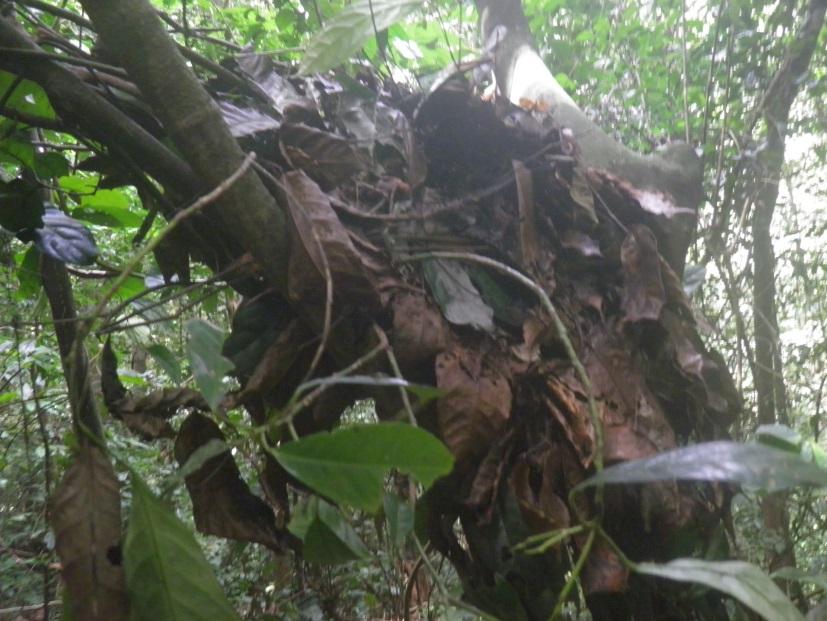Egbe Confidence Kedjuanji
Other projects
8 Jan 2020
Status of Nigeria- Cameroon Chimpanzee and Other Endangered Primates and the Dynamics of Bushmeat Hunting in Ndokbou Forest, North East of Ebo Forest, Cameroon
The aim of this study is to determine the Status of the Nigeria- Cameroon chimpanzee and other endangered primates and the dynamics of bushmeat hunting at the Ebo Wildlife Reserve, Littoral Region Cameroon.
Specific objectives of this study are:
• To understand how the current status of other threatened primates (in terms of their abundance, distribution etc.) relates to what is already known about the current status of chimpanzees at the Ebo Wildlife Reserve.
• To identify the physical and anthropogenic features determining distribution and nest site suitability.
• To identify the ecological and anthropogenic factors those determine chimpanzee abundance and group size, and the occurrence of nest sites.
• To determine the current dynamics and trends of bushmeat hunting at the Ebo Wildlife Reserve and how this relates to the current status of primate populations.
• To make recommendations based on research findings for the sustainable management of the Ebo Wildlife Reserve.

Chimpanzee tree nest.
The Nigeria-Cameroon chimpanzee (Pan troglodytes ellioti) is found in the Guinean Forests Biodiversity Hotspot located in western equatorial Africa (Butynski, 2003; Morgan et al. 2011). The subspecies survives only in forested habitats in southern Nigeria and in western Cameroon, north of the Sanaga River. As the most recently recognized subspecies of chimpanzee, it has been estimated that there may be as few as 3,500 individuals living in the wild (Morgan et al. 2011). Major threats to this chimpanzee and other endangered species include: conversion of forest and agricultural expansion; commercial logging; habitat fragmentation for settlement and roads; hunting for bushmeat and, illegal trade; and diseases (Oates et al. 2008).
The study site Ebo Wildlife Reserve was created in April 2005 due to its high diversity in both flora and fauna species. It lies in a biological hotspot with high species endemism, including; endangered Nigeria-Cameroon chimpanzee, African elephant (Loxodonta cyclotis), drill (Mandrillus leucophaeus), endangered Preuss's red colobus and gorillas etc. Conservation work at Ebo Wildlife Reserve was supported by the Ebo Forest Research Project (EFRP). In 2006, a new survey conducted at the reserve, revealed it to be of high conservation value and a significant site for Pan troglodytes ellioti (Morgan and Abwe 2006). Since then, the reserve has received very little conservation attention and until recently the current status of wildlife populations remained largely unknown (Abwe, 2016).
Previous studies have revealed that bushmeat hunting and trade have left some species highly threatened. The rate of harvest for some species such as chimpanzee, forest elephant drill etc. has not been sustainable, and has led to severe population declines (Gonder et al, 1997; Morgan and Abwe, 2003; Abwe, 2016). This decline may be due to high Bushmeat demand and high prices commands in urban towns like Douala the economic capital of Cameroon and Yaounde the capital of the Cameroon. So commercial hunters are increasingly attracted to nearby wild places to kill, carve up and roast animals to sell as meat. In littoral region and other parts Cameroon, chimpanzee and other primate species face extinction within the next 10 to 20 years if appropriate measures are not taken to safeguard their survival. Understanding the reasons for these declines and how the dynamics of bushmeat hunting and trade have changed over time will be critical if solutions to the current conservation crisis are to be found and if wildlife populations are to be protected.